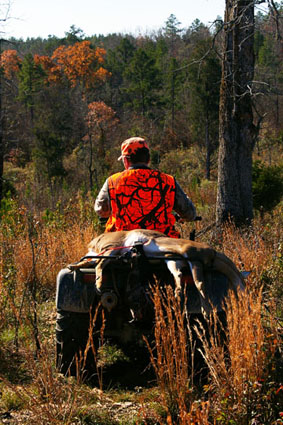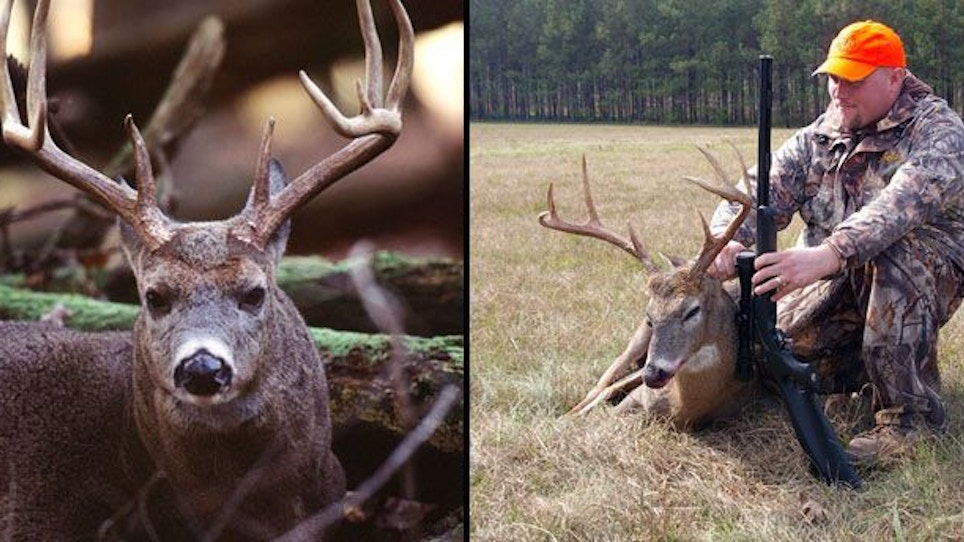 When hunting public ground, scout for hard-to-reach areas or small isolated tracts of land as these areas are often neglected by other hunters. Photo by Theresa Sutton |
Most deer today are heavily pressured by hunters. How well you cope with this pressure element often determines whether you have enough venison to fill your freezer or have to head to the grocery store’s meat department. These ideas can help.
Go Deep
Most hunters are in areas within a quarter to half mile of a road or parking area. On big tracts of federal or state lands, you often can get beyond them by starting earlier and walking in a bit farther. Study topographic maps and find areas where no roads or trails are present, then look for features that comprise good deer habitat.
There are other alternatives as well. Ride a mountain bike to reach lightly pressured areas. Float down a river in a canoe or johnboat, or motor across a lake to a parcel of public land hard to access from a vehicle. Hunt islands, which can be magnets for deer when hunting pressure intensifies. Make sure the place you hunt is on public property, though, or obtain permission in advance from the landowner.
Scout for Sign
Check potential areas before the season to see if there are tracks, trails, rubs and/or other signs of deer use. Then try to determine the animals’ patterns of movement. Bucks in these locations are not as apt to change their routines much after hunting season arrives because they rarely see people.
Isolated Tracts
Besides seeking hard-to-reach areas, also consider hunting isolated tracts of public land so small they tend to get neglected by other hunters.
Public areas are usually big spreads with plenty of parking areas and good access. But often there are also a few small parcels cut off from the main acreage. If there’s no easy parking, these isolated patches of habitat — sometimes just 50 or 75 acres — may hold several deer, and if it’s really overlooked, possibly a nice buck.
Dense cover or steep rugged terrain are the keys. When bucks feel pressured, they move to places where they can avoid humans.
Look for rugged areas with jumbled cover where an old buck might feel safe — thick brush along a creek bottom or in a swamp, hollows full of vines and blowdowns, a bench just below a mountain ridge, knolls and hills overlooking feeding areas or a patch of mountain laurel or a dense stand of conifers in an otherwise open, mature hardwood forest.
 When hunting away from the crowds, be sure you know how you’ll get your trophy out if luck is with you. You made need an ATV, or a friend with a strong back. |
Strip Down
It’s tough, but taking these pressured bucks is definitely an achievable goal. One way is to strip down to the necessities and get mobile. Leave your tree stand or blind at home. Bucks in this situation tend to be so attuned to their habitat you’ll probably spook the animal just by setting up. Rely on camouflage, immobility and patience instead of equipment. Begin hunting the minute you enter the woods. You may have to relearn how to walk soundlessly, recognize places to blend in and sit perfectly still.
Slip in to the downwind edge of a mature buck’s hideout or the thinly outlined trails leading to it, and sit back against a big tree or rock outcropping. Or hunker down in the branches of a blowdown. Don’t alter or brush it up in any way. Silence is key. Wear camouflage clothing except for the required blaze orange, and put on a facemask. Wait patiently, and watch intently. The buck you’re after may get up to stretch, urinate or nibble on browse, or perhaps he’ll slink in after a night’s feeding.
Split-Second Shooting Required
Go to a gun range and practice getting on target fast. You won’t have much time when you surprise a buck in dense out-of-the-way cover. Split-second shots are the norm.
Many hunters prefer a scoped rifle in this situation, setting the variable on low power. If there’s not time to get the animal cleanly in the crosshairs, they don’t fire. Others prefer hunting with open sights or a shotgun with buckshot (where legal) or slugs.
Use what you’re most comfortable shooting, but be practiced enough you can make a good shot when you see the right deer. Move at a moderate pace on edges of and through bedding cover, but make as little noise as possible. You need to analyze trophy quality and age quickly and be prepared to shoot immediately.
When you do bag one of these difficult, elusive animals, you’ll find the feeling of accomplishment runs much deeper than when you score on a private area where there’s less challenge involved. That makes the extra effort worthwhile.






